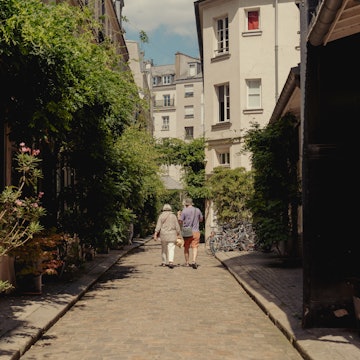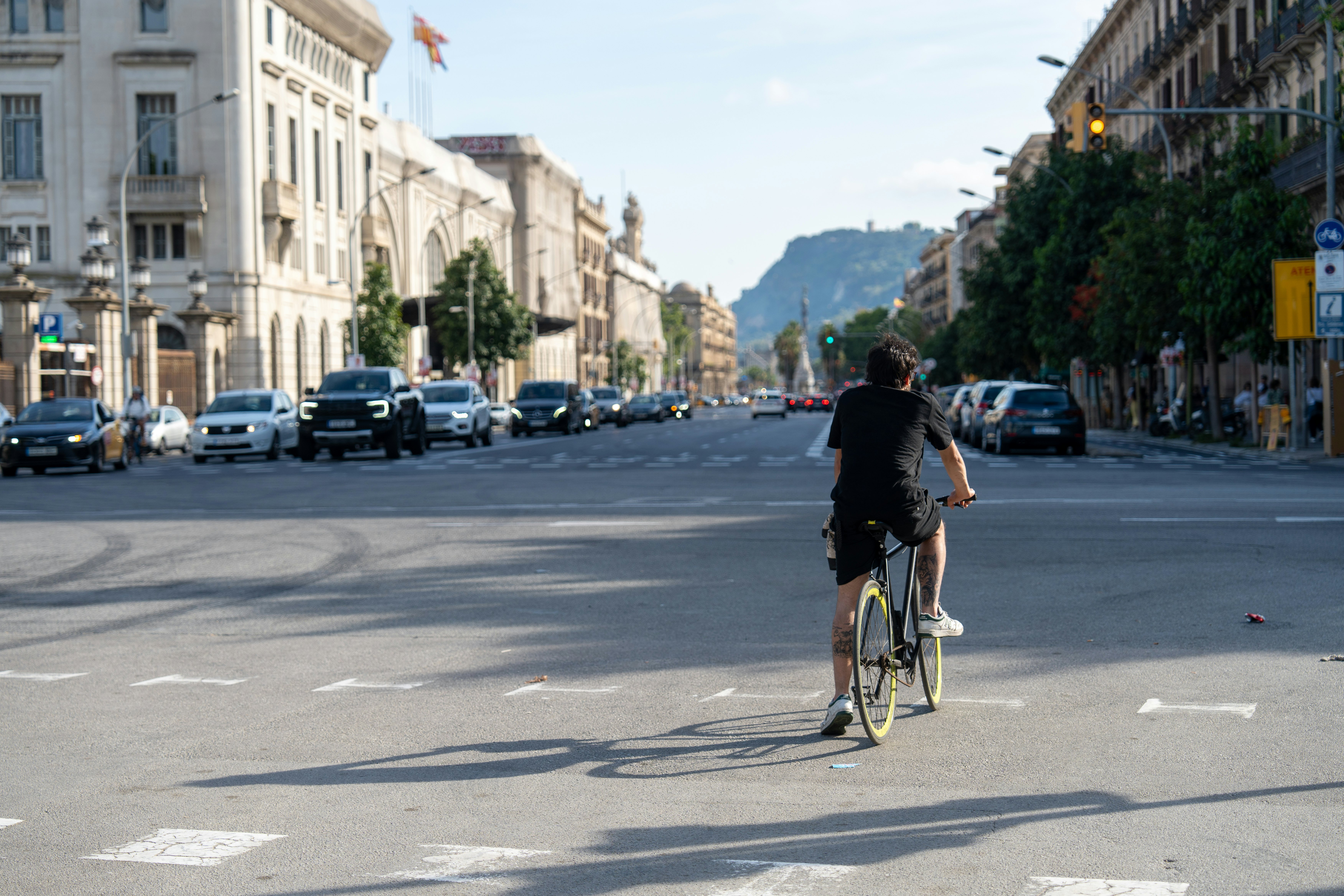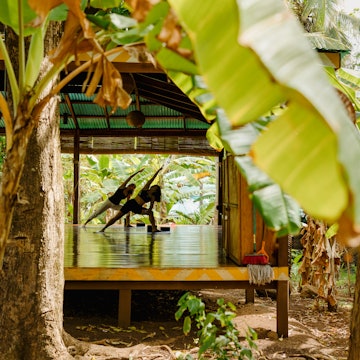
Lonely Planet’s guide to navigating overtourism in Barcelona

Jun 4, 2025 • 11 min read

Parc de la Ciutadella, Barcelona. Blake Horn for Lonely Planet
On any day, a wander around the famous Mercat de la Boqueria in Barcelona can feel like experiencing a microcosm of the city’s ongoing struggles with overtourism. There has been a market on this spot off La Rambla boulevard for hundreds of years, but since tourism exploded in the Catalan capital from the 1990s onwards things have changed rapidly. Many long-established vendors have now been pushed out, while others have gradually pivoted to more tourist-focused offerings, such as chopped-fruit salads in plastic cups. Some local residents avoid shopping here due to the overwhelming tourist crowds – each year the market receives a staggering 23 million visits. For visitors, all this means shuffling around La Boqueria and queuing among the olives, tomatoes and cheeses with throngs of others.
On the flipside, however, some barcelonins do still frequent La Boqueria to pick up fresh produce (including several respected chefs), usually dropping in first thing when the atmosphere is much quieter. Barcelona authorities have also recently kicked off various projects to revamp parts of the market and establish more balanced future plans for it as a welcoming neighbourhood space that both local residents and visitors can enjoy.
There are similarly conflicting stories all over Barcelona, the beloved Spanish coastal city that has become a poster child for the growing overtourism issues experienced by many destinations across the globe. While many of the city’s key ongoing issues require tackling on a wider scale (and several local initiatives are well underway), there are also plenty of ways in which individual travelers can take action. How our guide to visiting Barcelona responsibly.

Everyone loves Barcelona
There are many reasons why Barcelona has such enduring popularity. Mesmerizing buildings created by Antoni Gaudí and his Modernista contemporaries, a maze-like old town with roots dating back to Roman times and a crop of outstanding museums (Joan Miró and Pablo Picasso both established art galleries here) are just the beginning of seemingly endless highlights. Throw in a string of sandy beaches, one of Spain’s most exciting food-and-drink scenes, an always-lively line-up of cultural events, and charismatic neighborhoods dotted with sunny plazas, and the appeal is undeniable.
What does overtourism mean for Barcelona today?
Barcelona’s tourism boom began with the 1992 Olympics, which put the city on the international-travel map and brought in major changes, such as the creation of the golden beaches now stretching all along its shoreline. The arrival of budget airlines in the 2000s also helped make the city increasingly accessible. In 1990, Barcelona received 1.7 million annual visitors. By 2024, this number had skyrocketed to 15.6 million – all in a city with a population of just 1.7 million, according to 2024 figures. At the same time, tourism employs around 150,000 people in Barcelona and accounts for 14% of the city’s GDP.
It was impossible to miss last summer’s headlines when protestors against overtourism targeted visitors on La Rambla with water pistols. While it’s important to note that only a small number of were people involved here, there is no denying that local frustrations and concerns over the city’s future have reached boiling point. Short-term tourist rental apartments are a key issue, widely criticized for fueling Barcelona’s housing crisis.
On the ground, much of the day-to-day massification concerns are concentrated on Barcelona’s compact old city, especially the labyrinthine Barri Gòtic, home to major sights like la Catedral. The area around Antoni Gaudí’s spectacular La Sagrada Família is another overcrowding hot spot. Home to around 50,000 permanent residents, it sees around 4.7 million visitors make their way over to the basilica each year; but many more pass through simply to see the building from the outside. Even spots that were previously more offbeat are now seeing floods of visitors, in no small part thanks to social media. Among these is Bunkers del Carmel, a disused antiaircraft battery with sprawling city views. After its popularity soared in recent years, city authorities closed the space to the public outside daylight hours, following complaints from the neighborhood’s residents about late-night parties and other antisocial behavior.

What changes are being made on a local level?
Barcelona authorities are taking important steps to tackle overtourism. Perhaps most notable are plans announced by mayor Jaume Collboni to phase out all short-term apartment rentals by late 2028; there are currently 10,000 licensed private rentals in the city (plus many more operating illegally). Spain as a whole is also clamping down on private-rental platforms like Airbnb, and new hotel construction in Barcelona has been banned for several years now. Catalonia was one of the first regions in Spain to introduce a tourism tax back in 2012; this fee is added directly to accommodation bills and as of mid-2025 ranges between €6.60 and €12.10 (US$7.10 and US$13.75) per visitor per night.
A limit on tour-group sizes in the historic center and sensors installed on La Rambla to measure foot traffic are just a couple of the crowd-management initiatives that have been introduced. The city has also been busy creating a network of traffic-free superilles (superblocks), designed for pedestrians, cyclists and green spaces. And in late 2023, the bulk of Barcelona’s cruise-ship activity was relocated away from the city center to further-out piers, amid concerns about the industry’s environmental and social impact on a local level. That said, around 800 cruise ships still dock here each year, bringing 1.6 million visitors to town.
Turisme de Barcelona, the city’s tourist board, has turned its focus towards cultural events and changed its slogan from "Visit Barcelona" to "This is Barcelona", reflecting this new direction. There have also been major campaigns over the last few years to encourage visitors to explore other beautiful, less-touristed parts of Catalonia alongside Barcelona, including the Grand Tour de Catalunya initiative. And in efforts to combat some of the petty crime issues linked to overtourism, Barcelona’s municipal police are now offering emergency clothing kits for people who have had their belongings stolen while on the beach.

Tips on how to visit Barcelona more responsibly
Sidestep the biggest crowds (and stay longer)
While Barcelona’s main tourism season runs roughly from April to October, most visitors still arrive during the peak summer months (June to August). Spring and autumn trips offer often-sunny weather yet are lighter in terms of tourist crowds. With so many cultural highlights to keep you busy, winter can be a fabulous time to visit, especially if you catch a festival like the February Festes de Santa Eulàlia. Off-season trips can also mean great accommodation offers for visitors.
It isn’t all about seasonality either. The time of day you choose to explore a particular place or sight can make all the difference. If you’re keen to experience the foodie wonders of La Boqueria, for example, head there first thing as the market wakes up and make a beeline for the more local-focused stands towards the back. For many of Gaudí’s magical Modernista monuments, dropping in for the final slot just before closing time often means fewer crowds. Some of them even host live-music evenings up on their rooftops – a special way to see these classics in a different light. Or pop down to the seafront for some paddle boarding at sunrise before everyone else arrives. If staying longer is an option, you’ll have the chance to dig much deeper into the city, too.
Choose accommodations thoughtfully
As is often the case in destinations affected by overtourism, housing prices in Barcelona have risen sharply in recent years, and many long-term local residents who cannot afford them have been pushed out. According to reporting by the Guardian, rental costs across Spain have increased by 80% in the last decade, and Barcelona is no exception. Demand for private tourist rentals has played a part in these rising costs. By choosing to stay in one of Barcelona’s many wonderful hotels, family-owned B&Bs or lively hostels instead of a rental apartment, you’ll not only be directly supporting local businesses and workers, but also engaging with more people on the ground who can enrich your stay in myriad ways.
For some travelers, such as big groups or families with kids, a private rental can often make the most sense logistically. If considering one, check that the listing is legally licensed before booking.

Prioritize public transport
Who says you have to fly into Barcelona? The city has fast, easy and affordable train connections to destinations all over Spain, including Madrid (2½ hours), Seville and Málaga (both just under six hours). There are also high-speed TGV rail links to Paris in under seven hours. Once you’re here, the efficient TMB public transport system of metro lines and local buses gets you pretty much everywhere you could need (and at sensible prices), bolstered by a few cable cars, trams and regional trains. There has been local major investment in bike lanes all over Barcelona too, making getting around on two wheels a breeze. These are all great ways to avoid contributing to traffic congestion in this compact city.
Try Catalan cuisine and pick up a few local words
As the capital of Catalonia, Barcelona has its own strong regional culture, traditions and gastronomy. A rewarding way to engage with this rich heritage is through the traditional-driven food scene at restaurants serving delicious Catalan classics such as cap i pota (a beef-and-chickpea stew), trinxat (a potato-and-cabbage dish with pork) and mel i mató (a dessert of fresh cheese with honey). If the seasons align, sampling calçots – a type of spring onion, grilled and dipped in smoky romesco sauce – could well be a winter-visit highlight. And while both Spanish and Catalan are spoken in Barcelona, learning a few Catalan basics is usually much appreciated, starting with bon dia (hello/good morning) and gràcies/merci (thank you).

Seek out less-visited (and equally exciting) alternatives
As in many other popular cities, Barcelona’s overtourism concerns are often tied to a bucket-list approach of ticking off as many "must-see" attractions as possible in a short time, whether that means Gaudí monuments or cutting-edge cocktail bars. The big sights are popular for good reason, and indeed tourism investment is essential for many of these places. So by all means visit Gaudí’s astonishing Park Güell and Casa Batlló or the intriguing Museu Picasso in El Born. Just keep in mind that a little planning and pre-visit research can go a long way. Many of these attractions offer thoughtful ways to engage more deeply with their collections and architecture, for example, such as expert-led tours, creative exhibitions or special events.
But it also pays to allow time for lesser-known – yet still rewarding – sights and further-out neighborhoods. Consider, perhaps, exploring the northern Sarrià district, which has a village-like feel and is home to the 14th-century Monestir de Santa Maria de Pedralbes, a jewel of Catalan Gothic architecture. Or go hiking in the Parc Natural de Collserola, a refreshing 80-sq-km (31-sq-mile) expanse of pine-forested hills laced with walking trails and city views. Less-touristed alternatives for Gaudí fans include marigold-tiled Casa Vicens in Gràcia and the Pavellons Güell in Pedralbes, while market lovers can pick up treats at the revived Mercat de Sant Antoni, Gràcia’s Modernista Mercat de la Llibertat or L’Eixample’s under-the-radar Mercat del Ninot.
Similar issues often crop up on Barcelona’s food-and-drink scene too, with queues out the door and tables booked up months ahead for the latest hot spots. But my own favorite place to while away a few hours with friends over patatas bravas and vermouth isn’t on any hot lists – it’s just a convenient neighborhood bar with a lively terrace and a simple tapas menu.
Pick a tour with a purpose
No matter your niche interest, there’s an array of talented local experts keen to share their knowledge of Barcelona, which means a guided tour is always a rewarding investment. Food-tour companies Devour and Culinary Backstreets, for example, work directly with small, independent businesses, often located in less-obvious parts of the city and all still run by neighborhood residents. Barcelona Architecture Walks offers the chance to dig into the city’s urban shape accompanied by a working architect. Social enterprise Hidden City Tours, meanwhile, works with guides who have been part of Barcelona’s homeless community, providing employment and training opportunities alongside sensitive itineraries that showcase a different side to the city.
Support local craftworkers and neighborhood markets
From traditional ceramics to avant-garde jewelry, Barcelona has a thriving culture of artisanal crafts. The districts of El Born, Gràcia and Poblenou are all known for their creative artisanal scenes, with small-scale studios and boutiques welcoming visitors. Picking up handcrafted pieces at independent businesses such as Mostaza and Working in the Redwoods means showing support for local craftspeople (often meeting them too), and you’ll also come away with some of the most memorably original souvenirs in town. Barcelona Design Tours offers exciting guided itineraries focused on the city’s world of arts and crafts.
Another common concern for local residents is the constant flow of visitors wandering through Barcelona’s markets and taking photos without making any contributions to the businesses themselves. Barcelona has 39 neighborhood markets, with many stalls still run by local families – ideal for picking up a few snacks for a picnic in the park or on the beach, and a perfect excuse to sample local specialities like Garrotxa cheeses, thin fuet (dry-cured sausage) and juicy Catalonia-grown olives. The city also has over 200 officially protected comerços emblemàtics (iconic shops) which carry on decades – sometimes centuries – of local tradition. Showing them some love and discovering their stories helps ensure their long-term survival.















